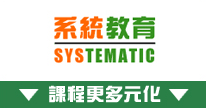課程名稱:CISA 國際認可證書課程
- 簡稱:CISA Training Course |
1. Domain 1: Information Systems Auditing Process
1.1. Planning
1.1.1. Introduction
1.1.2. IS Audit Standards, Guidelines, and Codes of Ethics
1.1.3. Business Processes and Audits
1.1.4. Types of Controls
1.1.5. Risk-Based Audit Planning
1.1.6. Types of Audits and Assessments
1.2. Execution
1.2.1. Audit Project Management
1.2.2. Sampling Methodology
1.2.3. Audit Evidence Collection Techniques
1.2.4. Data Analytics
1.2.5. Reporting and Communication Techniques
2. Domain 2: Governance and Management of IT
2.1. IT Governance
2.1.1. IT Governance and IT Strategy
2.1.2. IT-Related Frameworks
2.1.3. IT Standards, Policies, Procedures and Guideline
2.1.4. Organizational Structure
2.1.5. Segregation of duties / separation of duties
2.1.6. Enterprise Architecture
2.1.7. Enterprise Risk Management
2.1.8. Maturity Models
2.1.9. Laws, Regulations, and Industry Standards affecting the Organization
2.2. IT Management
2.2.1. IT Resource Management
2.2.2. IT Service Provider Acquisition and Management
2.2.3. IT Performance Monitoring and Reporting
2.2.4. Quality Assurance and Quality Management of IT
3. Domain 3: Information Systems Acquisition, Development, and Implementation
3.1. Information Systems Acquisition and Development
3.1.1. Project Governance and Management
3.1.2. Business Case and Feasibility Analysis
3.1.3. System Development Methodologies
3.1.4. Control Identification and Design
3.2. Information Systems Implementation
3.2.1. Testing Methodologies
3.2.2. Change, Configuration and Release Management
3.2.3. System Migration, Infrastructure Deployment, and Data Conversion
3.2.4. Post-implementation Review
4. Domain 4: Information Systems Operations and Business Resilience
4.1. Information Systems Operations
4.1.1. Common Technology Components
4.1.2. IT Asset Management
4.1.3. Job Scheduling and Production Process Automation
4.1.4. System Interfaces
4.1.5. End-User Computing (EUC)
4.1.6. Data Governance
4.1.7. Systems Performance Management
4.1.8. Problem and Incident Management
4.1.9. Change, Configuration, Release, and Patch Management
4.1.10. IT Service Level Management
4.1.11. Database Management
4.2. Business Resilience
4.2.1. Business Impact Analysis (BIA)
4.2.2. System Resiliency
4.2.3. Data Backup, Storage, and Restoration
4.2.4. Business Continuity Plan (BCP)
4.2.5. Disaster Recovery Plans (DRP)
5. Domain 5: Protection of Information Assets
5.1. Information Asset Security and Control
5.1.1. Introduction
5.1.2. Information Asset Security Frameworks, Standards, and Guidelines
5.1.3. Privacy Principles
5.1.4. Physical Access and Environmental Controls
5.1.5. Identity and Access Management
5.1.6. Network and End-Point Security
5.1.7. Data Classification
5.1.8. Data Encryption and Encryption-Related Techniques
5.1.9. Public Key Infrastructure (PKI)
5.1.10. Web-Based Communication Techniques
5.1.11. Virtualized Environments
5.1.12. Mobile, Wireless, and Internet-of-Things (IoT) Devices
5.2. Security Event Management
5.2.1. Security Awareness Training and Programs
5.2.2. Information System Attack Methods and Techniques
5.2.3. Security Testing Tools and Techniques
5.2.4. Security Monitoring Tools and Techniques
5.2.5. Incident Response Management
5.2.6. Evidence Collection and Forensics
6. Appendix: Additional Readings
6.1. Continuous audit techniques
6.2. Other types of system / software testing
6.2.1. Alpha and beta testing
6.2.2. Pilot testing
6.2.3. White box testing
6.2.4. Black box testing
6.2.5. Regression testing
6.2.6. Parallel testing
6.3. Types of Networks
6.3.1. PAN (Personal area networks)
6.3.2. LAN (Local area networks)
6.3.3. WAN (Wide area networks)
6.3.4. MAN (Metropolitan area networks)
6.4. OSI architecture
6.5. Network Topologies
6.5.1. Bus Topology
6.5.2. Ring Topology
6.5.3. Star Topology
6.5.4. Mesh Topology
6.6. Transmission Methods
6.7. Network Cabling, Interfaces and Interference
6.7.1. Cabling
6.7.2. Interfaces
6.7.3. Interference
6.8. Network Equipment / Basic Network Equipment
6.8.1. Routers
6.8.2. Switches
6.9. Network Services and Protocols
6.9.1. DNS (Domain Name Service)
6.9.2. Address Resolution Protocol (ARP)
6.9.3. DHCP (Dynamic Host Configuration Protocol)
6.9.4. Directory Services
6.9.5. NAT (Network Address Translation) / PAT (Port Address Translation)
6.9.6. IPsec VPN
6.10. Shadow IT
6.11. VoIP Infrastructure
6.11.1. Components in VoIP infrastructure
6.11.2. Risks in the VoIP infrastructure
6.11.3. Mitigating risks in the VoIP infrastructure
6.12. Wireless Architecture
6.13. More about Cloud Computing
6.13.1. Three Service Models
6.13.2. Four Deployment Models
6.14. Biometric Accuracy Measurement / Errors
6.15. Database transactions and ACID
6.15.1. Transactions
6.15.2. ACID
6.16. Database Views
6.17. Kerberos
6.18. Diffie-Hellman
|
